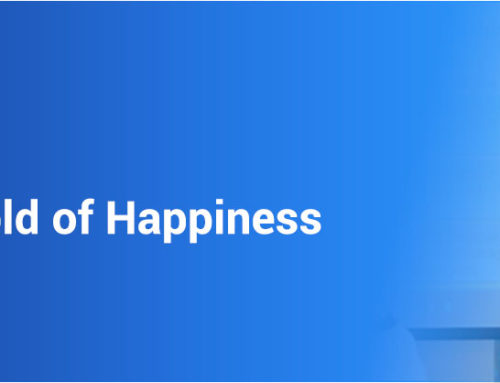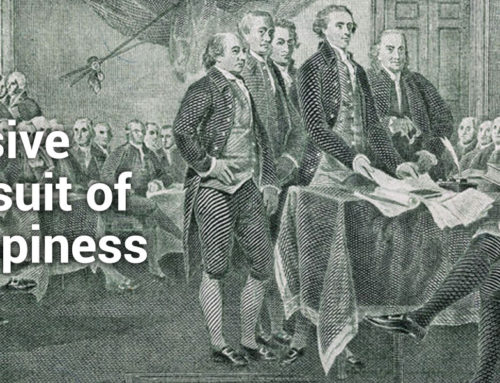In the previous two STILE POINTS, we presented an overview of six of the seven critical business processes essential to leading an R&D organization as shown in the figure below. The first three processes: strategic planning, R&D Management and Financial Management, are vertical processes that involve developing and communicating the strategy up and down the organization, and executing that strategy to achieve technical and financial goals. These are traditional “chain of command” processes that receive the most focus from management in terms of performance.

The next three processes: Business Development, Project Management and Product Development are horizontal, cross-functional processes designed to deliver products and services to the satisfaction of clients and stakeholders. These processes are considerably more difficult to manage because they involve more than one functional chain of command. In this STILE POINT we will finish the overview with the organizational development and renewal process.
Organizational Development and Renewal
Organizational development and renewal is the overarching process of talent acquisition and development that underpins all of the other critical business processes. I am defining the organizational development and renewal process broadly to include the acquisition, training, supervision and career development of staff throughout the organization. The prevalent view of this process is that it is the responsibility of Human Resources. Nothing could be further from the truth. HR plays an important role in organizational development by administering the performance management and career development process, counseling managers on best practices, and advising managers on individual staff decisions. However, it is the responsibility of each supervisor and manager throughout the organization to lead the process and make decisions, whether he is managing a project, program, department, division or the entire organization. The three key elements of the organizational development and renewal process include succession planning, hiring and promoting, and coaching for development and performance.
Succession Planning
The overall process of development and renewal starts with succession planning. Succession planning is the foundation of organizational development that underpins the entire process. By succession planning, I mean the systematic process of selecting the right staff for each job function and having replacements ready if and when the selected staff are promoted or leave the organization. This is particularly important for leadership positions within the organization, be they technical or managerial.
Take sports teams for example, who must perform at extremely high levels of performance at all times despite injuries or defections to other teams. The best performing teams start by selecting great talent and always seem to have players to substitute when talent is lost without sacrificing performance. This doesn’t happen by accident. Team rosters are developed with succession planning in mind and backup players for each of the key positions.
Unfortunately, this doesn’t always happen in R&D organizations. Too many times, I have seen major programs with substantial budgets build around one key technical person with no obvious backup in case that person becomes ill or leaves the organization. Vacant technical leadership and management positions can take six months or longer to fill creating quality problems and causing serious delays in organizational commitments. I call these single points of failure and have seen hundreds of them in organizations throughout my career.
A good succession plan identifies gaps in current key positions in the organization as well as backups for each of these positions. This plan then drives the next two processes designed to fill these gaps, hiring/promoting and coaching for development/performance.
Hiring and Promoting
The hiring and promotion process should be driven by the succession plan with the ultimate goal of having talented and motivated staff in each key leadership position with two potential backups. While difficult to achieve, identifying gaps and single points of failure in the plan will focus management attention on the top staffing needs. In addition to backup candidates within your organization, a useful addition to your recruiting strategy is to identify a list of individuals outside of your organization that could fill important positions if and when they become vacant. Sports teams call this their taxi squad.
When hiring or promoting staff, many R&D managers place most of their emphasis on qualifications and experience in their evaluation criteria. While such selection criteria are important, they are not sufficient to ensure a high success rate. I have interviewed hundreds of R&D managers in my consulting and course work who have said that they were very satisfied with only 50% of their hiring and promotion decisions. Worse still, they admitted that about one out of every three hiring and promotion decisions turned out poorly, resulting in costly damage control and hard feelings.
I have come to believe that there are good reasons for sub-optimal outcomes of the interview and evaluation process and, once understood, the success rate can be dramatically improved. Two key questions need to be definitively answered during the evaluation process: “Can the candidate do the job” and “Will the candidate do the job”? The first question deals with qualifications and experience and receives the majority of emphasis and evaluation. For the most part this question can be answered pretty accurately, although it is sometimes difficult with outside candidates to tell whether they have ten years’ experience or one year’s experience ten times.
It is the second question, “Will the candidate do the job?” that is rarely answered very well and is the key to improving the success rate of a hiring or promotion decision. Answering this second question deals with evaluating the specific job requirements and the talent and motivation of the candidate. This information involves evaluating leadership attributes that are harder to discern but will increase the success rate of the hiring or promotion decision dramatically. Each vacant job will have specific leadership requirements depending on the degree of difficulty of the job and the magnitude of change required.
Will the job entail strong leadership skills that require changes in the status quo? Are the changes needed strategic or operational? Will strong management skills be needed to get the job done? Will coaching skills be needed to develop and motivate staff? In STILE Points #15, 17, and 18, I have described the 9 key attributes that need to be evaluated to help answer these questions. The biggest mistake I see R&D managers make is in assuming that these attributes represent “soft” skills that can’t be measured. By delving more deeply into this area, “hard” data can be extracted which will result in much better hiring and promotion decisions.
Coaching for Development and Performance
The development and renewal process actually begins once a comprehensive succession plan has been put in place and positions filled by hiring and promoting the best available staff. This is a dynamic process with much flux that requires constant vigilance and intervention. I believe that an R&D organization left to its own devices will tend toward mediocrity. This is because outstanding staff are highly mobile and a certain percentage of them will leave the organization over time for better career opportunities. On the other hand, mediocre staff rarely leave organizations where they have comfortable positions unless forced to do so. Given the nature of R&D, the competition for talented technical staff is often the key factor in organizational success, making talent development and renewal a critical business process.
Despite elegant strategies and rigid management processes, the performance of most organizations fails to meet expectations. Why is this so? From my own experience as an R&D Managing Director, I found the performance of the organizations that I managed dramatically improved when I stopped trying to “manage” direct reports and spent my time coaching them to improve their performance and manage their professional development. I have also seen in my consulting practice a direct relationship between effective coaching and organizational performance by supervisors at all levels. I have come to the conclusion that coaching is the missing ingredient in achieving high performance (see STILE Point #19)
Although counter-intuitive, excellent coaches first focus on staff development prior to discussing performance goals. In coaching for development, the focus is on how the organization can meet the needs and aspirations of the employee. In most performance planning processes, staff development is an afterthought and rarely given much attention. I believe that this is one of the main reasons why organizations fail to reach their goals. In my opinion, the first priority in performance planning should not be determining performance objectives, but on the development process keeping in mind the gaps identified in the succession plan. High performance is achieved when staff are self-motivated and give 110% towards achieving organizational goals. Staff are motivated by tailored performance goals that match and challenge their skills. It is nearly impossible to develop tailored performance goals unless sufficient time is spent getting to know the strengths, weakness, aspirations and motivations of staff. This can only be accomplished by starting with the needs and aspirations of the staff member.
By getting to know staff really well, you can coach them toward specific assignments aligned with the needs of the organization that emphasize their strengths and minimize their weaknesses. Think of the coaching role as similar to a talent agent in the entertainment industry. Great talent agents know their clients’ strengths and recommend only those roles where they know their clients can perform well.
In performance coaching, the focus is on how the individual staff member can contribute to the goals of the organization. Imagine entering a performance-planning meeting with staff having already spent considerable time on their development plan. You are armed with information on particular strengths of the staff member and what truly motivates them in their job. You both have a clear understanding of the staff members’ career aspirations and the steps necessary to achieve them. You also know the staff members’ weaknesses and job functions they dislike that may impede their performance. If you have invested the time to get to really know the staff member and have already agreed on a development plan, you enter the performance planning process with an increased level of trust, so essential for a good coach.
The greatest return on investment of your time is getting to know your staff; what they are good at and what motivates them. This investment will pay immediate dividends and take less and less time each year as you get to better know your staff. There is no greater path to high performance than coaching a talented and motivated staff.



